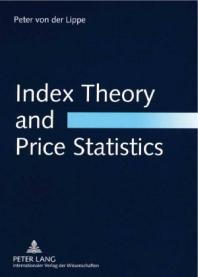
The Economic Problem
The relationship between finite resources and infinite wants and the resulting issue of scarcity
The decisions made by economic agents and concepts such as choice and opportunity cost
The basic questions of “What”, “How” and “For Whom” to solve the economic problem
Normative and positive statements
Production Possibility Frontier
Production possibility frontier/boundary/curve diagrams
Positions of economic efficiency and recession
The main causes of economic growth
The Determination of the Demand for Goods and Services
Definition of a market
Effective demand and the drawing of the demand curve
The effects of price change on movement along the demand curve (extensions and contractions)
Causes of shifts (increases and decreases) in demand
Elasticity of Demand
Definitions of price, income and cross elasticity of demand
Degrees of elasticity
Interpretation of the different elasticities of demand
Factors that influence the elasticity of demand
The relationship between price elasticity of demand and total revenue
Price/Quantity diagrams to illustrate elasticity of demand
The Determination of the Supply of Goods and Services
Definition of supply and the supply curve
The effects of price change on supply
The causes of shifts (increases and decreases) in the supply curve
Price/quantity diagrams to illustrate supply
Price Elasticity of Supply
Definition of price elasticity of supply
Calculation and interpretation of different elasticities of supply
The factors (determinants) that influence the elasticity of supply
Price/Quantity diagrams to illustrate elasticity of supply
The Functions of Price
The role of the free market
Adam Smith’s “invisible hand” theory
The 3 functions of price: rationing, signaling and incentive
Price Determination in the Market System
Equilibrium/market prices
The interaction of shifts in demand and supply and the resulting fluctuations in price and output
Shortage and surplus (excess demand and supply)
Consumer and producer surplus
Inter-relationship Between Markets
Joint demand
Competitive demand
Derived demand
Joint supply
Externalities & Market Failure
Concepts of private (internal) costs and benefits, external costs (negative externalities) and benefits (positive externalities), social costs and benefits
Merit and de-merit goods
Methods a government might use to reduce market failure
Characteristics of public goods
Arguments for and against government provision of public and merit goods
Cost-Benefit Analysis
The process of evaluation of social costs and benefits
The advantages and disadvantages of the process
Objectives of Firms
The concepts of average and marginal revenue
The traditional neo-classical view of firms seeking to maximise their profits (MC=MR)
The difference between normal and abnormal profits
Alternative objectives of firms: revenue maximisation, sales maximisation and profit satisficing
Production in the Short-Run
Factors of production (i.e. land, labour, capital and entrepreneurship)
Types of industry (primary, secondary and tertiary)
Costs of production - fixed, variable, total, average and marginal costs
Calculation of a firm’s costs from given data and interpretation of cost curves
The concept of the short and long-run
The law of diminishing returns through the stages of returns to scale
The short-run average cost curve.
Explain the concept of marginal product
Production in the Long-Run
Average cost curves and the connection between the short and long-run
The concept of division of labour and strengths and weaknesses of the system
Internal economies of scale i.e. technical, managerial, marketing, purchasing, financial and risk bearing
External economies of scale i.e. infrastructure, communications
Causes of diseconomies of scale i.e. technical, managerial
U shaped and L shaped average cost curves
Growth of Firms
Types of mergers and takeover i.e. horizontal, vertical (backward and forward) and conglomerate
Reasons why firms seek to merge
The advantages and disadvantages of merger and takeover activity for both the firm and consumer
Perfect Competition
Characteristics of perfect competition i.e. price takers, perfect knowledge, free entry and exit, homogenous products
Diagrams to illustrate short run and long-run equilibrium
Monopoly
Characteristics of monopoly i.e. barriers to entry, price makers, imperfect knowledge
The causes of monopoly power i.e. the causes of barriers to entry
The equilibrium diagram and identification of the profit maximising and revenue maximising position
The advantages and disadvantages of monopoly markets to consumers, the firm and the economy
The concept of price discrimination
Oligopoly
Characteristics of the market. i.e. barriers to entry, interdependence, price stability, non-price competition, incentives to collude
The concept of the kinked demand curve
Simple game theory


